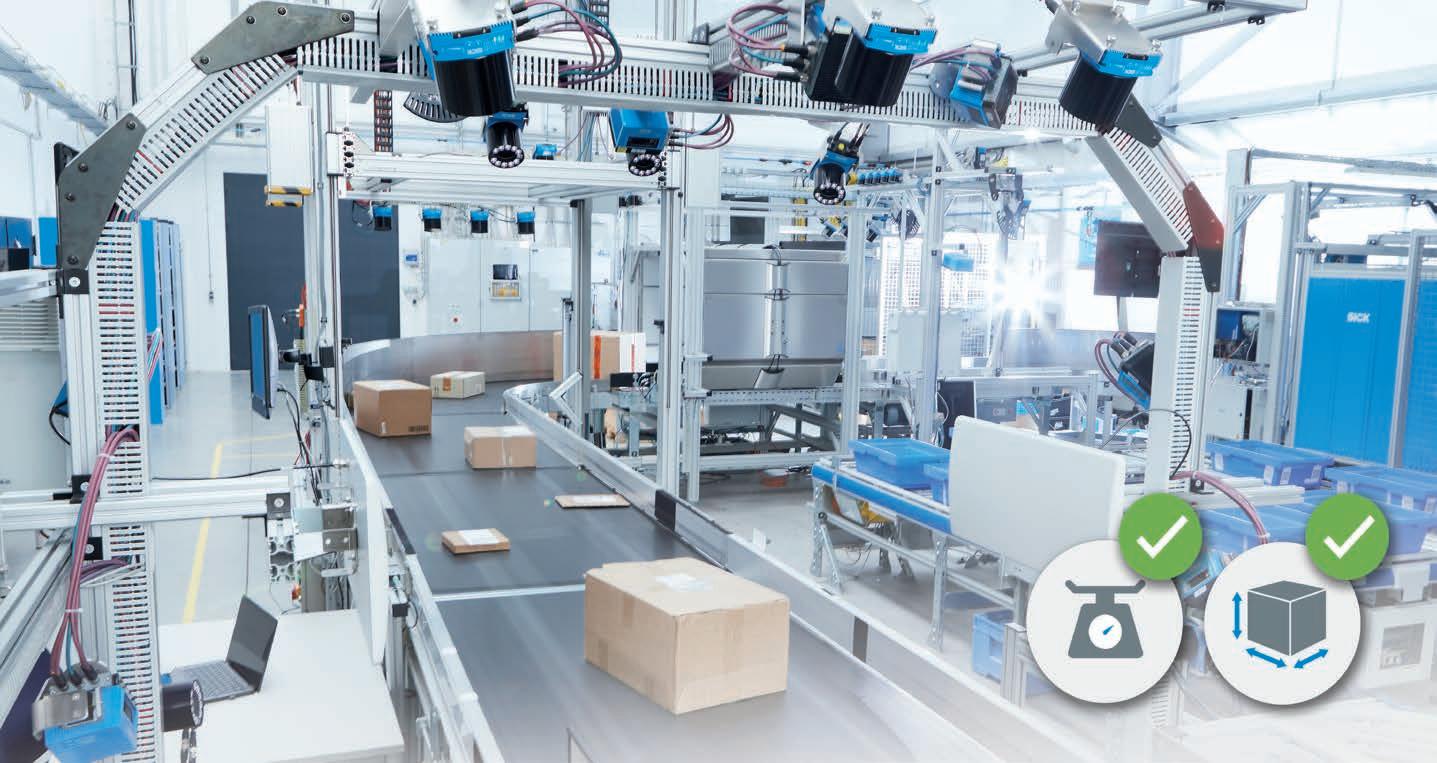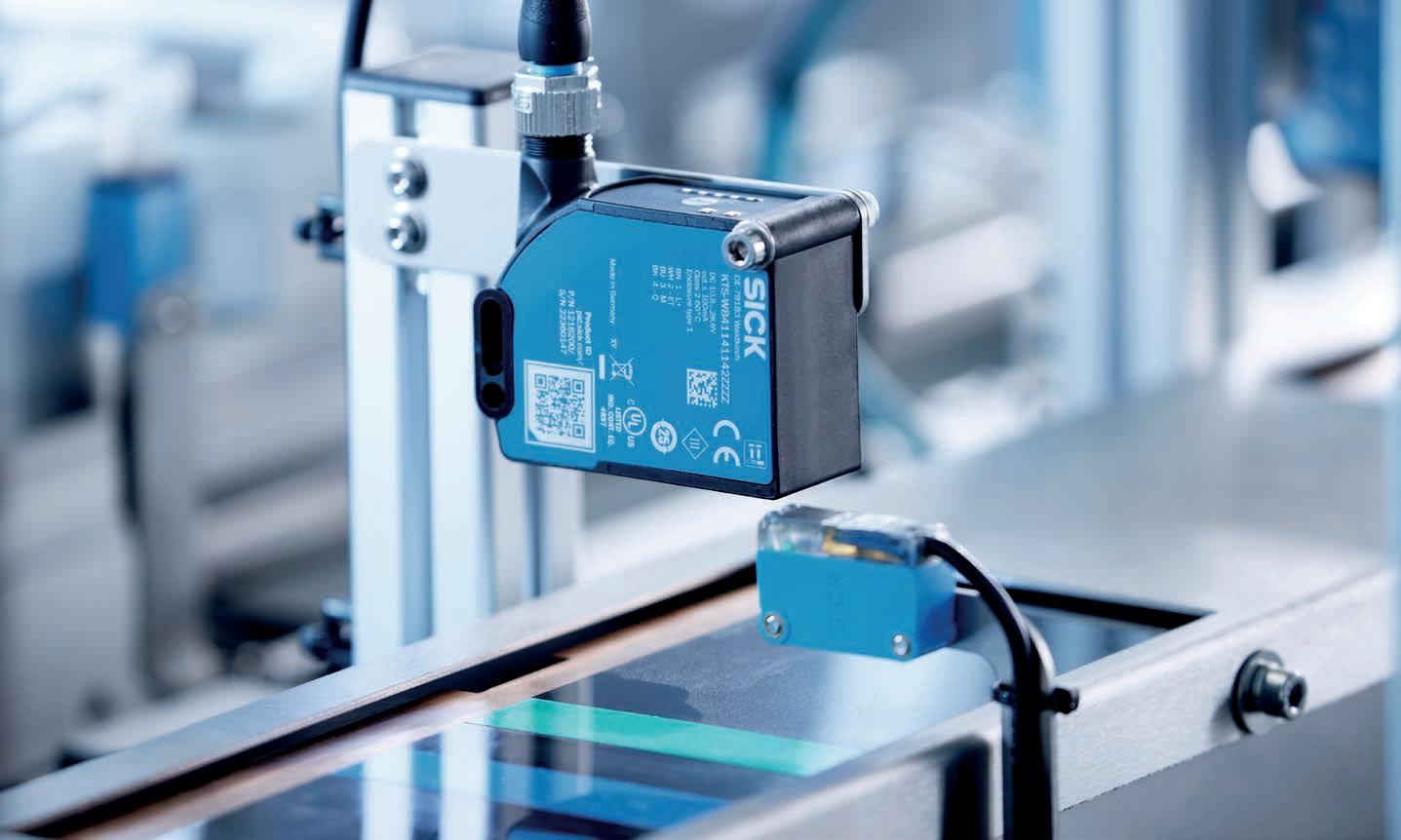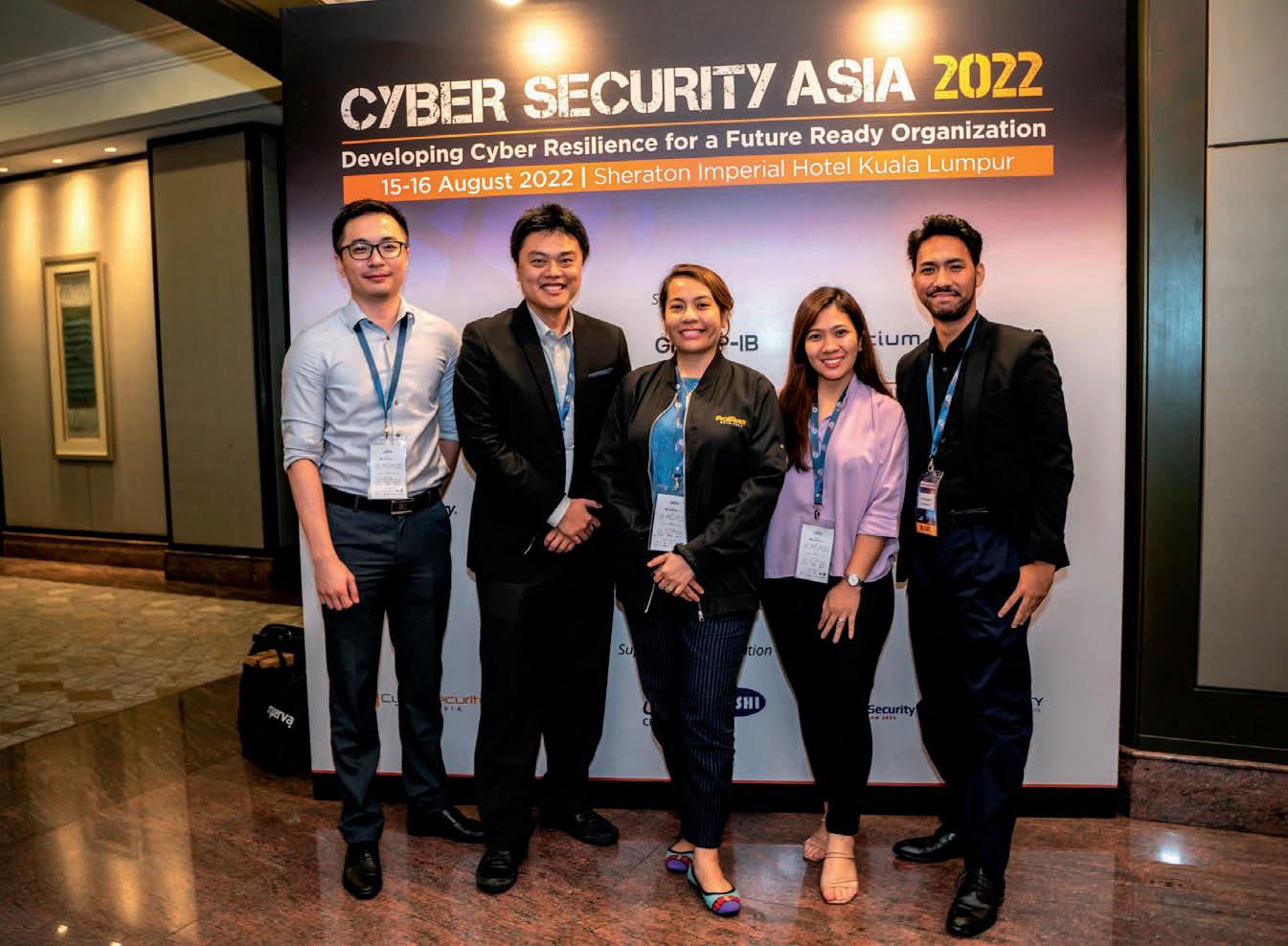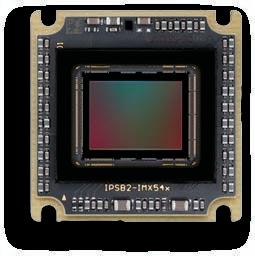Minimizing Negative Effects on The Environment with SICK’s Intelligent Sensors































































































































































































































Minimizing Negative Effects on The Environment with SICK’s Intelligent Sensors































































































































































































































 Michael Goh Managing Director SICK
Michael Goh Managing Director SICK
Michael Goh is the Managing Director at SICK Sensor Intelligence in Southeast Asia, a global sensor provider and market leader of intelligent sensor solutions for industrial applications. He is responsible for driving the sales and service operations in Southeast Asia, focusing on areas of process, factory, and logistics automation as well as Industry 4.0.
1. SICK is a well-known technology and market leader, providing sensor intelligence and application solution to keep the industry moving. What are SICK’s background and achievements?
SICK is one of the world’s leading suppliers of sensors and sensor solutions for industrial applications. The company, founded in 1946 by Dr. Erwin Sick, is a technology and market leader with a global presence – with over 50 subsidiaries, associated companies, and sales offices worldwide, achieving Group sales of about EUR 1.7 bn. during the 2020 fiscal year.
Today, we have more than 11,000 SICK employees worldwide, and all of us are constantly innovating and developing market sensor solutions for more sustainable businesses: Energy-efficient production and process control, timely logistical activities, improved accident prevention, and advanced solutions for the energy transition, among other
things. Protecting the environment and people, securing stable jobs through long-term economic success, and making a contribution to society have been SICK’s sustainability philosophy since the company was founded. Everyone encounters SICK sensors almost daily. Our sensors ensure safe, efficient, and clean processes in the background while tailoring our solutions with the peoples’ requirements and process needs in mind. As our sensors develop and evolve over the years, data collected by sensors become increasingly important as they offer new growth potentials and permutations as a system solution, to help advance the current smart digital age and advance
with the digitalization era, supplementary to the core business of sensor safety and production. SICK’s digital solutions –with serial products, systems, and services – are trailblazers for digitalization and Industry 4.0.

The SICK Singapore headquarters had just relocated to a high-tech park in the North of Singapore last year, in accommodation to our continuous growth - to facilitate and host our partners and customers better with a bigger space, and our new Experience Center. It is an exciting time for SICK Southeast Asia, as we are looking to expand our Malaysia KL office next!

2. What are the differences between a smart sensor and an intelligent sensor? Why does SICK opt for the latter?
A smart sensor is just a sensor that can generate and receive data from the environment, going beyond traditional switching signals or measured process parameters. But Intelligent sensors can carry out several intrinsically intelligent functions automatically, such as the ability to self-test, self-validate, self-adapt, and
self-identify, based on their surroundings and circumstances. A smart sensor may have advanced features, but it may not have conditional functions which make it “intelligent.”
We combine our decades of experience and knowledge from being in the sensor market, with reliable software architecture, taking the functions and abilities of a smart sensor one step further into an intelligent sensor. Because we believe that an intelligent sensor will optimize
production and control networks using complex algorithms, despite the challenges of processing ever-increasing volumes of data. We chose to build intelligent sensors because we believe that intelligence is the way to go.
3. Share with us how intelligent sensor works and how it helps the production and logistics systems in smart factories.

Central to the smart factory is the technology that makes data collection possible. These include the intelligent sensors, motors, and robotics present on production and assembly lines that the smart factory puts to use. Intelligent sensors make it possible to monitor specific processes throughout the factory, increasing the capability to be aware of what’s happening in smart factories on multiple levels at any given time. Making sensors more intelligent means the sensors are now able to record realtime operational statuses, turn those into

digital data, organize and process them, and share the most optimal data or action automatically with the production or logistics process systems controller. The degree of digitization, intelligence, and networking is set to increase continually in production and logistics systems until these systems can eventually control and optimize themselves autonomously. For example, vibration sensing can provide warnings when motors, bearings, or other equipment need to undergo maintenance. With these types of subtle warnings, they become alerts for preventative maintenance or other actions that head off larger production problems if left unattended.

4. How does SICK’s intelligent sensor help companies in achieving their environmental goals and minimize negative effects on the environment?
Sensors play a huge part in the positive impact of technology on the environment as they often play a vital role in the monitoring and reduction of harmful activities. A stable environment is what allows economic success in the long run and the economy is a subset of its environment. Committed to ecological sustainability at SICK, we move towards green sustainability, producing intelligent sensor technology to be used across a wide range of applications, tackling challenges to protect the climate, and mitigating environmental concerns. As the sensors were built and the company was founded with safety and protection as its initial goal, it naturally expanded to the safety and protection of the environment, as our founder was a pioneer in environmental measurement technology.
Today, we have sensors and systems that help companies to achieve their sustainability goals as well, by providing them with emission monitoring solutions and services. We develop CO2 measuring devices for combustion and process
plants, monitoring products for waste incineration plants, power, steel, and cement plants, oil, and gas industry applications, as well as for chemical and petrochemical plants, to help SICK customers reduce their greenhouse gas emissions. Together, these solutions make an important contribution to multiindustries to help them and protect our environment.
5. How does the idea of sustainability come forward? In your view, how can intelligent sensors help contribute to sustainability in a long run?
In an era of digitization, we are surrounded by innovative technologies that are already changing our reality as we know it. Currently, many companies are under pressure to reduce their emissions
and carbon footprints. Some industries are tackling these challenges while improving efficiency and reducing costs. Yet many companies need advice and prompts on where and how to start to move towards sustainability.
Since data collection and emission monitoring are the first steps for achieving sustainability, SICK and our intelligent sensors are best suited to guide them towards a sustainable future, as consistent monitoring of energy consumption with intelligent sensors helps to identify patterns and ways of optimizing it through varying other factors in production.
After all, if we cannot measure something, how do we improve it?

The Malaysian economy is facing the challenge of a rapidly changing industrial landscape due to the emergence of Industry 4.0.
Industry 4.0, also known as the Fourth Industrial Revolution (IR4.0 or 4IR), calls for a shift in how industries operate, focusing on increased automation and data exchange in manufacturing technologies.

This changing industrial landscape presents opportunities for Malaysian industries, especially small and medium enterprises (SMEs), to invest in and adopt new technologies and processes in order to become more competitive and efficient.
SMEs’ contribution to the country’s exports accounted for only 12 per cent in 2021 compared with the target of 25 per cent in the 12th Malaysia Plan (12MP), while their contribution to the nation’s gross domestic product stood at 37 per cent in 2021 versus the 45 per cent target in the 12MP.
Hence, there is a need to encourage SMEs to embrace IR4.0 to maximize their potential and make a bigger contribution to the country’s export value and eventually become the engine of economic growth, according to the Malaysian Investment Development Authority
“In terms of operating and labor costs, we have an incredible opportunity to leverage IR4.0 and the latest technology to stay competitive with our regional friends such as Vietnam, Indonesia and Thailand.
“By investing in the latest machines and adopting technology, SMEs can increase their productivity and remain competitive in the global market. Let us take advantage of this incredible opportunity for growth and success, “she told Bernama.
To ensure that Malaysia gets the optimum benefits from IR4.0, Masni said the government had launched the National 4IR Policy in July 2021, in anticipation of emerging developments as well as to provide guidance and promote coherence in achieving the 4IR agenda.
The 4IR policy complements the Malaysia Digital Economy Blueprint (MyDIGITAL) in driving the digital economy development agenda.
As part of the coordinated IR4.0 strategy, the Ministry of International Trade and Industry has appointed MIDA as the implementing agency for the financial support facility known as Industry4WRD Intervention Fund.
The fund will provide eligible SMEs with a grant of up to RM500,000 on a matching basis (70:30), based on eligible expenditures.
A maximum of 30 per cent of the matching amount (out of 70 per cent of the total grant) will be awarded upfront to the companies, and the remaining grant will be reimbursable.
Masni said 281 SMEs were approved to receive the financial support facility from 2020 until 2022, with a total grant value of RM101.4 million.
Out of the total, 82 SMEs were approved for the fund in 2020, 111 in 2021 and 88 in 2022.
Additionally, there is an incentive known as the Automation Capital Allowance (Automation CA), which encourages manufacturing and services companies to adopt automation and enhance their productivity through investment in automated machinery and equipment.


For this incentive, the government is providing an Automation CA of 200 per cent on the first RM4 million expenditures incurred for labour-intensive industries and 200 per cent on the first RM2 million expenditures for other industries, including services.
MIDA has also formulated strategic programs to continue facilitating the establishment and expansion of multinational corporations (MNCs), large local companies (LLCs), and mid-tier companies in Malaysia.
Equipped with a structured and completed ecosystem in various industries, Masni said MIDA promotes strategic collaborations between domestic companies with MNCs and LLCs to become part of the local supply chains with technological capabilities.
“The MIDA-Perodua Digital Transformation Ecosystem Program launched in 2020 has been essential in driving forward the capabilities of local automotive players in Malaysia.
“This initiative has enabled local players to remain competitive and keep pace with the ever-evolving automotive industry.
“Through a series of facilitation sessions, all vendors have started their digitalization journey, which takes three years to complete the (IR4.0) projects,” she said.

Additionally, Masni said MIDA has collaborated with Malaysia Digital Economy Corporation (MDEC) since last year for the setting up of the Digital Investment Office (DIO) to coordinate and facilitate all digital investments in Malaysia, in line with the government’s aim to attract RM70 billion investments in digitalization by 2025.

“The setting up of the DIO is timely and in accordance with the evolution of the global investment landscape towards digitalization and IR4.0, creating unique and exciting value propositions for digital projects.
“The clusters of digital enablers including data center infrastructure, artificial intelligence, cloud computing, and big data analytics expand opportunities for support services, skilled jobs and productivity upskilling among both large and small business communities,” she added.


Masni said MIDA has put forward new proposals to the government, mainly to increase the adoption of technology and
automation among domestic companies, especially SMEs.
“In terms of industrial development, the focus is on making sure that the SMEs adopt technology, reduce reliance on foreign workers and increase productivity.”
As the country advances, she said the SMEs should leverage and take advantage of the Comprehensive and Progressive Agreement for Trans-Pacific Partnership which was ratified by the government last year.
“Whenever we sign free trade agreements, there are benefits whereby we can enter other markets, expand our trades and export more, but it is undeniable that SMEs face specific challenges due to increasing competition, while some may not be adequately prepared.

“Hence, we need to improve our competitiveness which goes back to the adoption of technology, innovation, as well as research and development to expand their capabilities and increase performance,” she said.
Organized by:
The International Logistics & Material Handling Exhibition & Summit






For the first time, “soft robots” now have a level of physical self-awareness comparable to that of humans and other animals due to stretchy e-skin
Do we stand a better chance of granting robots a true sense of touch?

Electronic skin is being developed by scientists in the hopes that it may help with surgical procedures and perhaps benefit those who have movement problems. For the first time, “soft robots” now have a level of physical self-awareness comparable to that of humans and other animals due to stretchy e-skin.
The method, according to researchers at the University of Edinburgh, could result in additional advancements in soft robotics by allowing objects to precisely detect their movements in the most delicate environments. The University of Hong Kong was also a participant in the study, which was published in the journal Nature Machine Intelligence.
Soft robots with e-skin, which scientists create using flexible materials rather than metal or hard plastics, could be used for a variety of tasks, including prosthetic limbs, surgical equipment, and gadgets that investigate dangerous places while remaining highly flexible.
Soft robots struggle to comprehend their own motion, shape, and interactions with their surroundings without e-skin. This creates a significant obstacle in the development of the sensory systems required for robots to perform precise jobs and interact securely with humans.

The research team is the first to create a solution that gives soft robots extremely precise, real-time sensing capabilities, reported Study Finds. A flexible e-skin that is only one millimeter thick and is made of a thin layer of silicone that is embedded with wires and sensitive detectors was developed by researchers.


Scientists were able to provide soft robots with the ability to quickly feel their motions and deformations with millimeter accuracy in three dimensions, in real-time, using the e-skin as well as artificial intelligence. The scientists put this e-skin to the test by attaching it to a flexible robot arm, and they discovered that the technology was capable of sensing a variety of intricate bending, stretching, and twisting movements throughout the entire device.
“The perceptive senses endowed to robotic devices by this new technology are similar to those of people and animals. This new level of physical self-awareness represents a step change in the sensing capabilities of soft robots,” said Dr Yunjie Yang from Edinburgh’s School of Engineering in a university release.
Study co-leader Dr Francesco GiorgioSerchi, also of the School of Engineering added that this technology can help robots realize their own existence by making them perceive their shape and movements.
 Sections of the team’s flexible e-skin fitted to a soft robot arm. — University of Edinburgh
Sections of the team’s flexible e-skin fitted to a soft robot arm. — University of Edinburgh
Allied Vision Technologies Asia Pte.Ltd.
Automate Asia Magazine
EMAX 2023 / PMAX 2023
EVM Asia Expo 2023
Harting Singapore Pte Ltd
Igus Malaysia Sdn Bhd
ITEX 2023
Metaltech 2023
Phoenix Contact (SEA) Pte Ltd
Saudi Smart Logistics 2023
Saudi Smart Manufacturing 2023

Schaeffler Bearings (Malaysia) Sdn Bhd
Smart Factory Indonesia 2023
Smart Nation Expo 2023
Yokogawa Engineering Asia Pte Ltd
www.alliedvision.com
www.asiaautomate.com
www.emaxasia.com
www.penang-expo.com
www.evmasia.com
www.HARTING.com/SG
www.igus-asean.com
www.ITEX.com.my
metaltech.com.my
www.phoenixcontact.com.sg
saudi-smartlogistics.com
saudi-smartmanufacturing.com

www.schaeffler.my
smartfactory-indonesia.com
smartnationexpo.org
www.yokogawa.com/sg























